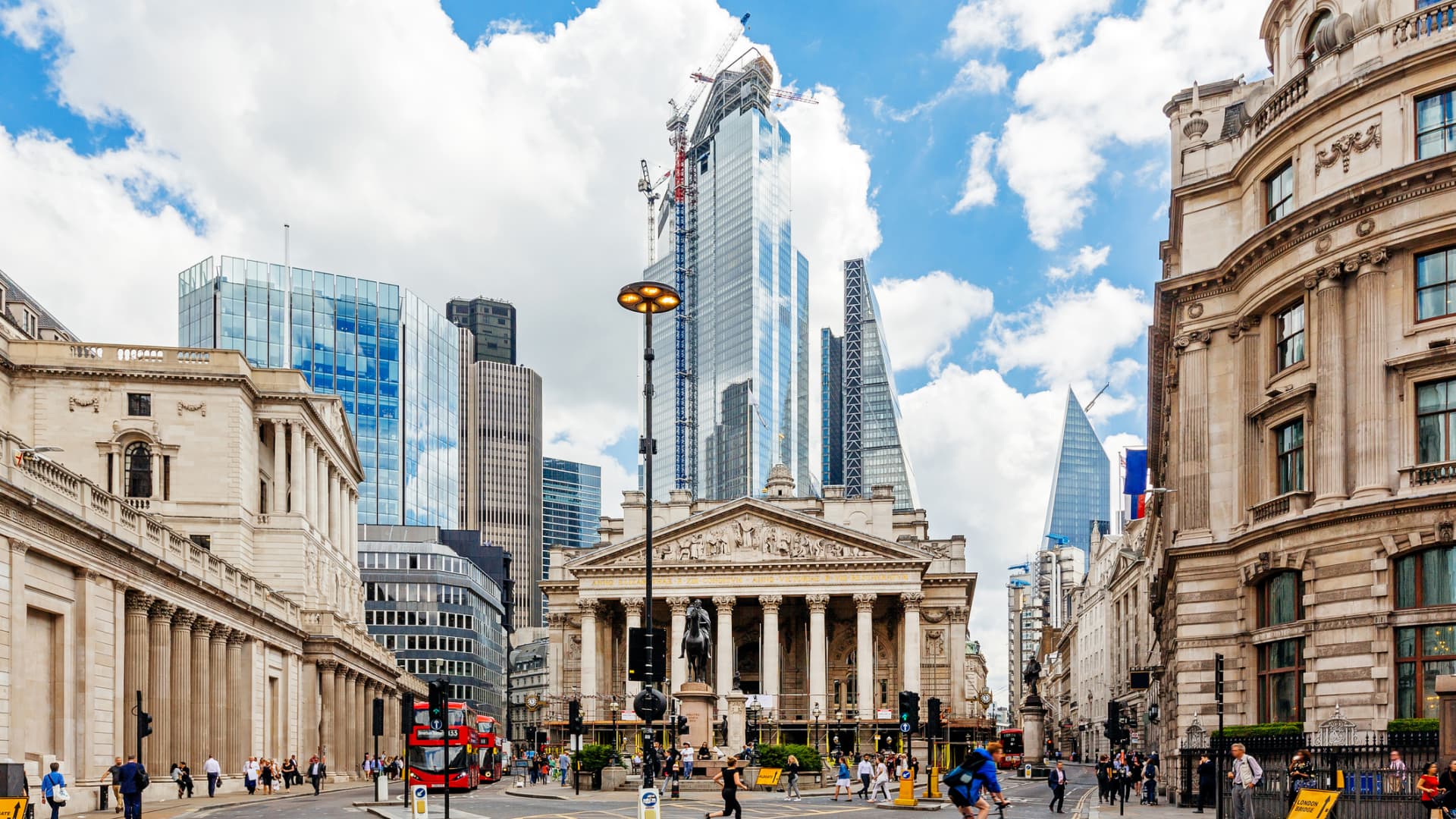Inflation surprise puts a rate-hike pause back on the table for Bank of England

In August, the Bank of England increased interest rates for the 14th time in a row.
Alexander Spatari | Moment | Getty Images
LONDON — The Bank of England‘s next monetary policy move is now wide open, following a significant downside surprise in the August inflation print out earlier on Wednesday.
Prior to the August consumer price index reading, the market was pricing in an 80% chance that the central bank would hike interest rates by 25 basis points on Thursday to 5.5% — the highest level since December 2007.
Market pricing swung drastically after the annual headline CPI print fell to 6.7% in August from the 6.8% of July, defying a consensus forecast that it would rise to 7%.
Shortly after 12 p.m. London time, the probability that the Bank will hold rates steady at 5.25% had risen from 20% to more than 57%, according to LSEG swaps data.
Notably, core CPI — which excludes volatile food, energy, alcohol and tobacco prices — came in at 6.2% in the 12 months to the end of August, down from 6.9% in July. The goods rate rose slightly from 6.1% to 6.3%, but was more than offset by the services rate slowing significantly from 7.4% to 6.8%.
Following the surprise, Goldman Sachs changed its projection for Thursday’s critical rate decision and now expects the Bank of England to keep its main bank rate unchanged.
With today’s data, two out of the three indicators that the MPC has set out to monitor inflation persistence have now shown notably more progress than anticipated since the August meeting. Combined with their recent dovish commentary, we now expect the MPC to keep Bank Rate unchanged tomorrow and lower our forecast for the terminal policy rate to 5.25% (from 5.5% before).
A ‘much more finely balanced’ decision
Barclays analysts said in a research note on Wednesday that the broad-based downside surprise, especially relative to the Bank’s August projections of a 7.1% headline inflation print and a 7.2% services rate, meant that the Bank of England’s decision of Thursday is now “much more finely balanced.”
However, the British lender still favors a 25 basis point increase, albeit with a more dovish vote split among Monetary Policy Committee than previously anticipated.
This was echoed by Berenberg Senior Economist Kallum Pickering, who said in an email on Wednesday that, although the downside surprise in August inflation strengthens the chance of a pause on Thursday, the MPC is likely to lean towards one more increase, “while providing a strong signal that further hikes are unlikely as long as inflation continues to trend lower.”
“After all, monthly data can be volatile and, despite the sharp fall in core inflation, price pressures remain well above the BoE’s 2% target. In addition, underlying demand remains mostly resilient and wage pressures are still elevated – which adds to services cost pressures,” Pickering added.
The Bank of England has been treading a narrow path between bringing inflation back to earth and tipping the so far surprisingly robust economy into recession.
After a slew of profit warnings from British companies on Tuesday — and with the U.K. economy shrinking by 0.5% in July, well below a consensus forecast of a 0.2% contraction — the MPC will be under more pressure to take its foot off the brake, as inflationary pressures abate.
Danni Hewson, head of financial analysis at stockbroker AJ Bell, said that, alongside the profit warnings and weak GDP print, the downside inflation shock could give the MPC “enough wiggle room to adopt a wait and see strategy.”
“It’s important to remember the impact of these rate hikes is a slow burn. What has been done over the past 14 meetings is only just being felt by many businesses and homeowners, with half a million of the latter dreading the anticipated Christmas present of increased mortgage payments at the most expensive time of the year,” Hewson added.
“Although inflation is falling, that doesn’t mean prices are coming down, and if the Bank of England has grounds to at least skip this rate hike that’s because cracks are beginning to form.”









